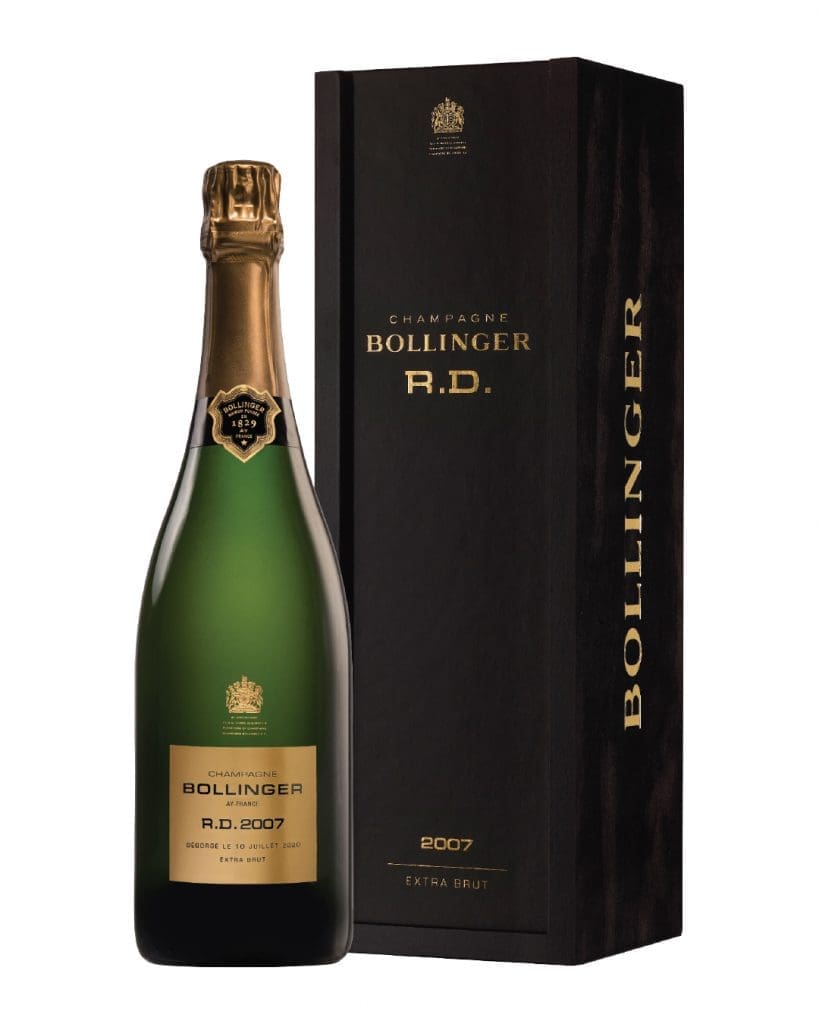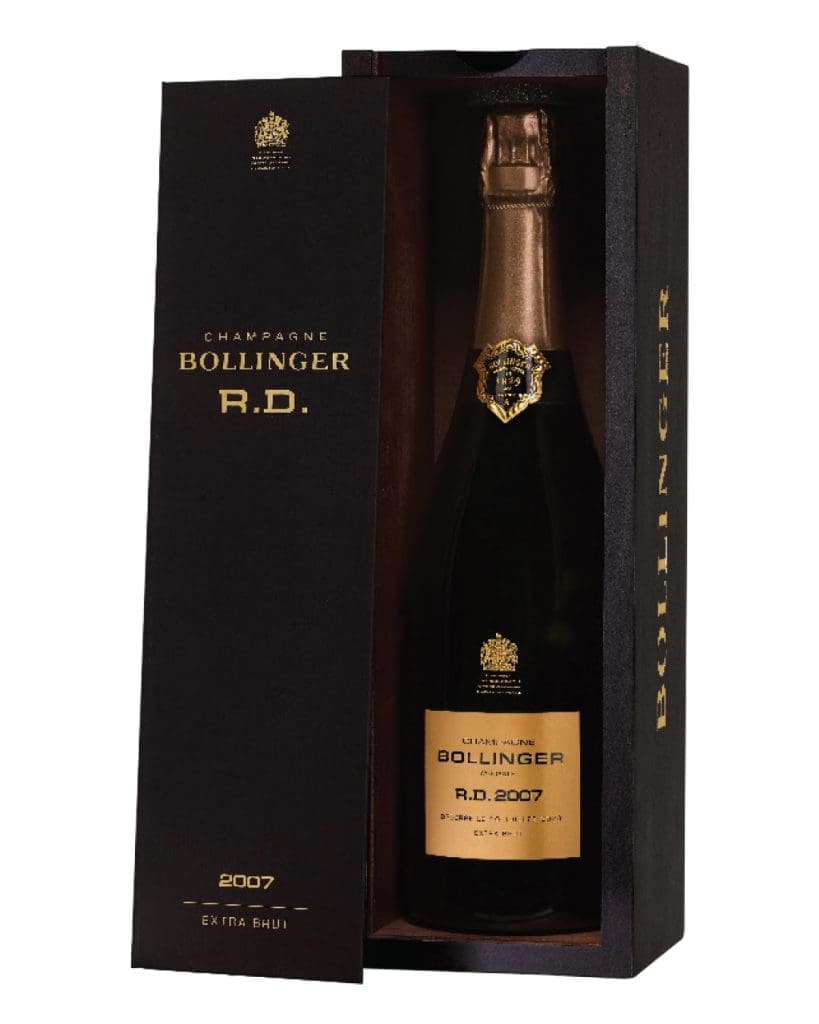Bollinger R.D. 2007 – The Best Of The Best
You may have lived your entire life thinking that a good Champagne only has one age. If you’re buying non-vintage wine, you may not have even heard of Disgorgement dates. Recording the disgorgement date wasn’t done until Bollinger’s own Madame Bollinger had the flash of inspiration to do it. The year was 1967 and drinking old vintages was not in vogue. This didn’t stop her from marketing their recently disgorged 1952 bottle as an Extra Brut. Low dosage Champagne was also fighting the tide at the time. Proving to the world that an old vintage with a recent disgorgement can outshine anything on the market shows what a genius Madame Bollinger really was. A wine that’s been given the luxury of time to sit, and only just recently disgorged, means you can experience its full expression of aromas from its contact on the lees, as well as the flavours of a more youthful vintage. It changed both the Bollinger style and the Champagne world forever.
This is the key to the success of the R.D. Cuvée. Shortly after its disgorgement, their 2007 vintage has been brought to bear, and has taken all its queues from the legacy of its 1952 counterpart. Very few vintages pass muster to be up to the standard for R.D and even when they are, only a limited amount of bottles are produced, each lovingly by hand.
“The 2007 vintage of the R.D. Cuvée embodies the House’s dedication to hard work and Madame Bollinger’s vision,” says Charles-Armand de Belenet General Manager of Champagne Bollinger. “It underscores our belief in the authenticity of our expertise. The contrast between freshness on the palate and the spicy aromatic intensity of Bollinger R.D. 2007 brings a new experience of the cuvée to lovers of fine wine.”

Champagne can sit on its lees for years, remaining fresh as the yeast is able to absorb any rogue oxygen. During this time, it slowly matures and develops complexity. Once it has aged, the bottles are rotated in what’s called riddling, to loosen the sediment. Disgorgement is then done to remove this sediment after it has collected in the neck. It can be done either by skillful hand or by machine. Despite machines doing this via a freezing process four times faster than people can, Bollinger has kept the tradition of doing it by hand alive, made only a little easier by the fact that this process is reserved for very rare vintages.

Once the bottle has been disgorged, it will then begin to age. Knowing the date of disgorgement tells you so much about how much life the Champagne still has, and its profile will evolve substantially after just a year or two. For example, a late disgorgement from five years ago may taste creamier and complex while a new disgorgement will be more fresh and youthful.
2007 was an interesting year, as it was one of the earliest harvests in a century, and the grapes themselves were magnificent. The contrast between the intensity of the spicy aromas, the notes of fruit, brioche and honey, and the wine’s freshness makes for a rare tasting experience of this vibrant cuvée.

